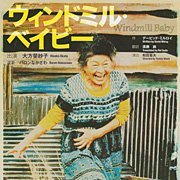Indigenous Australians are the custodians of one of the oldest continuous living cultures in the world. Indigenous culture is diverse, and contributes strongly to Australia’s national identity and arts scene.
Australian Indigenous art is the oldest ongoing form of art in the world. Original forms of artistic expression included rock carvings, body paintings, dance and song. Australian Indigenous art is still richly produced today and embodies a range of form and media reflecting diversity in language, landscape and culture across Indigenous society.
Showcase: 2016-17 - One Road: Aboriginal Art from Australia’s Deserts
The One Road exhibition is based on Yiwarra Kuju: The Canning Stock Route. Yiwarra Kuju was developed by the National Museum of Australia and FORM and toured Australia from 2010 to 2013.
One Road tells the artists’ stories of first contact with white men, livestock and machines. It explores the change from hunter–gatherer existence to life as international artists.
The exhibition is currently on tour in Japan (Osaka, Takamatsu, Chiba and Hokkaido) from June 2016- May 2017. For details please refer to the Events page.

Showcase: 2008・2010 - Windmill Baby
Theatre Rakutendan continues its focus on Australian and Aboriginal theatre, presenting David Milroy’s ‘Windmill Baby’. Based on the people, local stories, legends and oral histories from the Pilbara and Kimberley region, since its premiere in Perth 2005, ‘Windmill Baby’ has journeyed on five international tours and readings in Paris, Canada, England, India and Northern Ireland, as well as extensively in Australia.
For the Rakutendan production in Tokyo, ‘Windmill Baby’ will be performed solo by the great veteran Japanese actress Ogata Hisako.
Showcase: 2008 - Utopia: The Genius of Emily Kame Kngwarreye
Emily Kame Kngwarreye was an Aboriginal artist who began painting canvases when she was around 78 years old. In the period between 1988 and 1996 Emily produced a staggering 3000 canvasses of unique Indigenous art that reflect the environment of her community of Utopia in the Central Australian Desert. Her acclaimed painting style has been compared by prominent art critics to 20th century abstract expressionists such as Jackson Pollock and Mark Rothko.
An exhibition showcased 120 works of Emily displayed at the National Museum of Art, Osaka and then the National Arts Centre, Tokyo. It was well received by Japan, attracting more than 120,000 visitors. Utopia: The Genius of Emily Kame Kngwarreye is the largest collection of works by a single Australian artist to be displayed overseas.



(Above left) My Country AKA The Last Series, 1996,Synthetic polymer paint on canvas, 58.0 x 87.5 cm,Collection of Amanda Howe,© Emily Kame Kngwarreye. Licensed by VISCOPY, Sydney, 2007.
(Below left) My Country, 1996,Synthetic polymer paint on canvas, 55.5 x 76.5 cm, Private Collection, © Emily Kame Kngwarreye. Licensed by VISCOPY, Sydney, 2007.
(Centre) Emily Kame Kngwarreye Photograph by Greg Weight
(Above right) Kam[e], 1991, Synthetic polymer paint on canvas, 137.8 x 303.1 cm, National Gallery of Victoria, Melbourne, Purchased from Admission Funds, 1992 © Emily Kame Kngwarreye. Licensed by VISCOPY, Sydney, 2007.
(Below right) Big Yam Dreaming, 1995,Synthetic polymer paint on canvas, 291.1 x 801.8 cm,National Gallery of Victoria, Melbourne, Presented through The Art Foundation of Victoria by Janet and Donald Holt and family, Governors, 1995, © Emily Kame Kngwarreye. Licensed by VISCOPY, Sydney, 2007.

